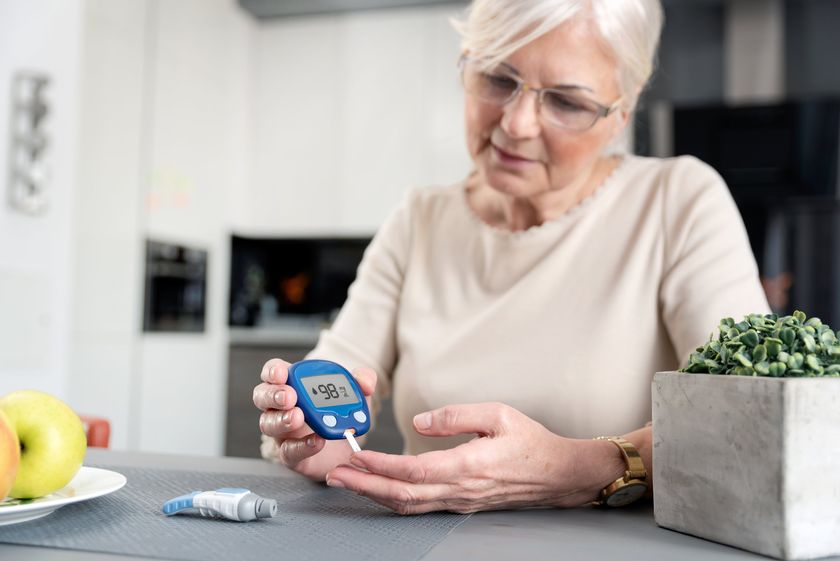- Categories :
- More
Stepping Forward: A Comprehensive Guide to Diabetic Foot Care

Understanding the Risks
Diabetes, a chronic condition affecting millions worldwide, can significantly impact foot health. The disease results in your body being unable to produce and properly distribute insulin, according to the American Podiatric Medical Association or APMA. If you are experiencing pain and concerned it could be related to diabetes, schedule your appointment with one of our foot and ankle specialists today.
According to the American Diabetes Association, diabetic nerve damage can lessen your ability to feel pain, heat and cold. This means you might not realize you have a foot injury until it gets infected. High blood sugar levels can damage nerves and blood vessels in the feet, leading to a range of complications:
-
Neuropathy: Nerve damage that can cause numbness, tingling, and pain. This can make it difficult to feel injuries, leading to delayed healing and increased risk of infection.
-
Peripheral Arterial Disease (PAD) reduces blood flow to the feet. This makes healing harder and the body struggles to fight infections.
-
Foot Ulcers: Open sores that can become infected and lead to serious consequences, including amputation.
The Role of Podiatry
According to the Centers for Disease Control or CDC, podiatrists play a critical role in detecting and treating diabetes.
Podiatrists, foot and ankle specialists, are essential in managing diabetic foot complications. Their expertise enables them to:
-
Perform Regular Foot Examinations: Conduct thorough assessments to identify early signs of problems.
-
Proper Foot Care Education: Provide guidance on daily foot care, including:
-
Daily Inspections: Check for cuts, blisters, redness, or swelling, especially between the toes.
-
Foot Hygiene: Wash feet daily with warm water and mild soap, paying special attention to drying between the toes.
-
Moisturization: Apply lotion to dry skin, avoiding areas between the toes to prevent fungal infections.
-
Nail Care: Trim toenails straight across, and seek professional help for ingrown toenails.
-
Footwear: Wear well-fitting, comfortable shoes that protect the feet and distribute weight evenly. Avoid tight-fitting shoes, high heels, and flip-flops.
-
-
Custom Orthotics: Design personalized orthotic devices to redistribute pressure, reduce friction, and improve comfort.
-
Advanced Wound Care: Employ specialized techniques to promote healing, such as:
-
Debridement: Removing dead or infected tissue to create a clean wound bed.
-
-
Offloading: Reducing pressure on affected areas through the use of special boots, braces, or cushions.
-
Advanced Dressings: Applying specialized dressings to absorb drainage, promote healing, and prevent infection.
-
Surgical Intervention: Perform procedures to correct deformities, remove infected tissue, or improve blood flow.
If you’re interested in learning more about tips for healthy feet, schedule your appointment with one of our podiatrists today or learn more from the CDC here.
Prevention is Key
While podiatry plays a crucial role in managing diabetic foot complications, prevention is paramount. Here are some preventive measures:
-
Strict Blood Sugar Control: Maintain optimal blood sugar levels through diet, exercise, and medication. Regular monitoring and adherence to treatment plans are essential.
-
Regular Eye Exams: Diabetic retinopathy can harm your vision. This increases the risk of falls, which may cause foot injuries.
-
Healthy Lifestyle: Incorporate regular physical activity and a balanced diet into your routine. Exercise can improve circulation and help control blood sugar levels.
-
Quit Smoking: Smoking further compromises blood flow to the feet, increasing the risk of complications.
Partnering with Your Podiatrist
By working closely with a podiatrist, individuals with diabetes can take proactive steps to protect their foot health. Regular check-ups, adherence to recommended foot care practices, and prompt treatment of any issues are crucial.
A strong partnership between the patient and the podiatrist is essential for optimal foot health. Talking openly, joining in treatment plans, and asking questions can help people take charge of their foot health.
Doctor’s Inc. commits to providing comprehensive diabetic foot care. Schedule an appointment today to ensure your feet are in optimal health.
Additional Tips for Diabetic Foot Care:
-
Avoid extreme temperatures: Protect your feet from both hot and cold temperatures. Avoid using heating pads or hot water bottles directly on your feet.
-
Check your feet daily: Look for any cuts, blisters, redness, or swelling. Use a mirror to inspect the bottoms of your feet.
-
Protect your feet from injury: Wear shoes that fit well and protect your feet from injury. Avoid walking barefoot, even indoors.
-
Manage stress: Stress can affect blood sugar levels, so it's important to find healthy ways to manage stress.
By using these tips and working with your podiatrist, you can lower your risk of serious foot problems. This will help improve your overall quality of life.
The Impact of Diabetes on Native American Communities
Native American communities face a disproportionately high burden of diabetes, according to the National Library of Medicine. This disparity is due to a combination of genetic, lifestyle, and socioeconomic factors.
Genetic Predisposition: Certain genetic factors may make Native Americans more susceptible to developing diabetes. Lifestyle Factors: Diet, physical inactivity, and stress can all play a role in the development of diabetes. Socioeconomic Disparities: Limited access to healthcare, healthy foods, and safe environments can exacerbate the risk of diabetes.
Addressing the unique challenges faced by Native American communities is crucial for improving diabetes prevention and management. We can reduce the impact of diabetes on these communities by offering culturally sensitive education. We should also increase access to healthcare and promote healthy lifestyle choices.
The Role of Telehealth in Diabetic Foot Care
Telehealth has emerged as a valuable tool in providing accessible and convenient diabetic foot care. Through virtual consultations, patients can connect with podiatrists from the comfort of their homes. Telehealth can be used for:
-
Remote Monitoring: Patients can share photos of their feet with their podiatrist to monitor for any changes.
-
Telehealth Consultations: Podiatrists can provide education, answer questions, and assess the need for in-person visits.
-
Telehealth education can offer group sessions virtually to provide information about diabetes, foot care, and self-management techniques.
By using telehealth, we can improve access to quality foot care for people with diabetes. This is especially important for those in rural or underserved areas. If you’re experiencing pain and concerned it’s related to diabetes, please schedule your appointment today.
Remember, taking proactive steps to manage diabetes and prioritizing foot health is essential. By partnering with one of our licensed podiatrists, you can reduce your risk of complications and improve your overall well-being.

















